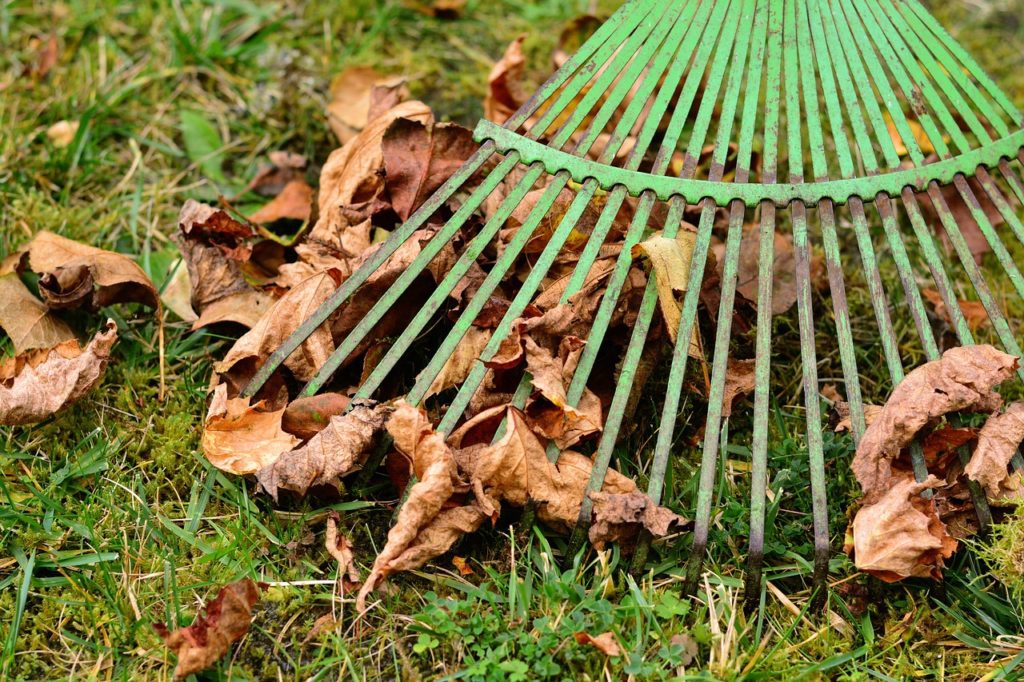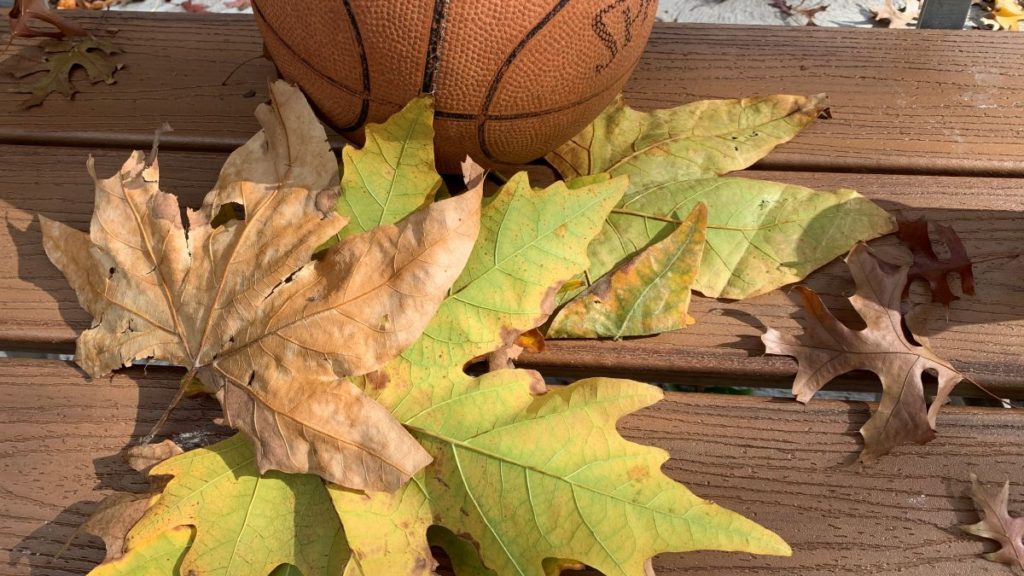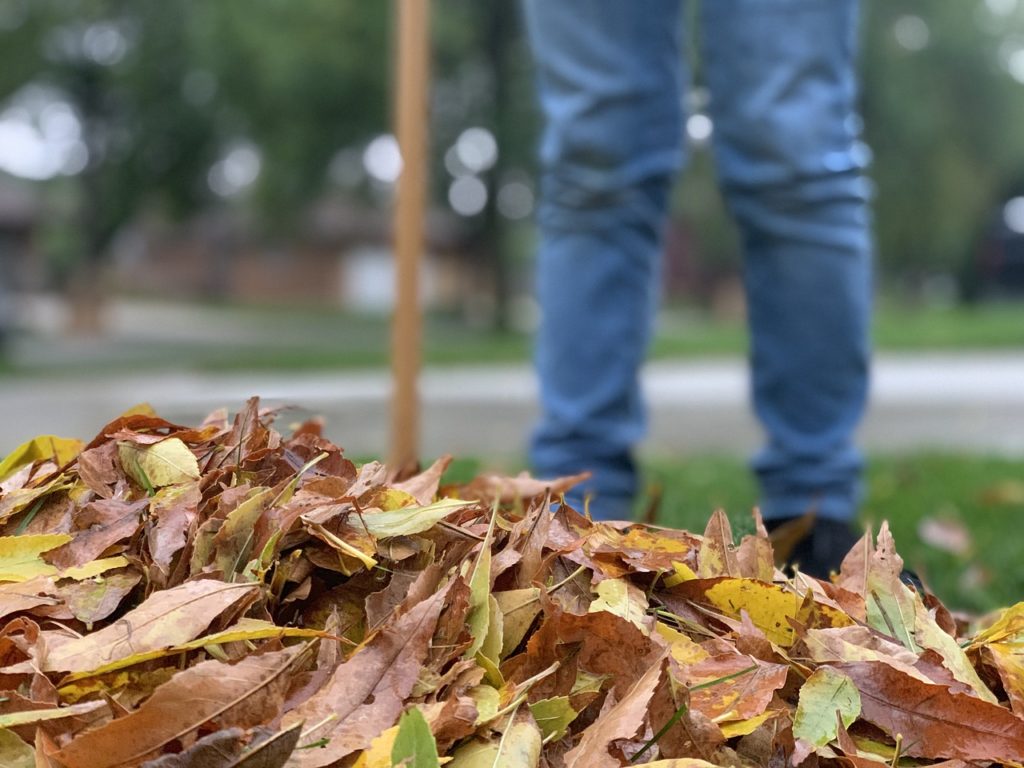Use a rake to remove excess leaves from flower beds if they have formed a thick blanket as they can smother plants and cause the soil to become anaerobic. Fall leaves can be left on flower beds if they are a light layer which allows rain to get through to the soil and plants. Large Fall leaves like Oak can quickly form a thick blanket and can smother plants and soil.
Top 3 reasons to rake leaves off flower beds
Here are 3 factors that can help you to decide if you should rake leaves off your flower beds or leave them there to decompose naturally.
Leaves form a blanket
Fall leaves that land on flower beds and form a thick blanket, where you can no longer see the soil or mulch means that you should grab your rake and remove them.
Small amounts of fall leaves are fantastic for soil but if they form a blanket that blocks light this can stop your soil from getting light and air and the soil bacteria can start to break down the leaves without oxygen.
A thick layer of leaves can form mold on your flower beds which can be ugly, and the soil can become wet, soggy and compact.

Leaves are large
Large fall leaves like Oak and Maple can quickly cover your garden beds and can easily fall on flowers and start to rot. Large fall leaves are more likely to land on and cover plants which can block the light and stop them from growing well.
The great thing about large fall leaves is that they are easy to rake up, they can be easily collected using a light rake and a mulch shovel.

Flower beds are in a windy area
For flower beds that are exposed to windy areas, it is best to rake up any fall leaves that land in your garden beds. On windy days these leaves are easily spread throughout your garden bed and can end up on your lawn or covering plants.
How to rake fall leaves from garden beds
Once you decide that you will need to rake up leaves from your garden beds there are a few easy tips that will lead to success.
Use a flexible rake
Using a flexible rake to remove fall leaves from garden beds is the best way to remove just the leaves and avoid taking any mulch. A flexible, leaf rake will move as you drag it across the garden bed and can lightly pick up your leaves.
Check out this one from Amazon.

Use a mulch shovel
Using a mulch shovel to pick up the leaves is the easiest way to move large amounts. A mulch shovel has a large, open end and is incredibly light. They are low cost and last a long time.
I have had my mulch shovel for over 15 years now and it is still going strong.
Check out mulch shovels from Amazon here.

Use a flexible compost bag
Scoop up fall leaves once they have been raked in a pile into an eco-friendly compost bag. These flexible, natural fiber bags can be used to turn your leaves into compost or as an easy way to move leaves around your garden.
Check out this one from Amazon.

What to do with raked leaves from flower beds
Once you have raked leaves from flower beds the best thing you can do is turn them into compost. To help leaves break down quicker, shredding them is the key.
Fall leaves are shredded easily by laying them on a lawn or open garden area and mowing over the leaves. This will shred them into smaller pieces helping them to break down quicker.
Once the leaves have been shredded they can be added back to the top of flower beds to be used as mulch. Shredded fall leaves can also be added to your compost bin to break down and turn into humus.
Check out this leaf blower with a shredder function from Amazon.

Benefits of raked leaves for flower gardens
Fall leaves turn to compost quickly whether they are added to a compost bin, large wire cage or placed on top of garden beds.
Shredded fall leaves provide organic matter to soil bacteria and worms which will break it down and mix through the nutrients from the leaves into the soil.
Fall leaves have a natural balance of nutrients and will help to improve the soil by improving soil structure. Worms that dig their way through the soil to eat the fall leaves will add air holes for your flower roots to grow large and strong.
What happens if you don’t rake leaves from flower beds
If you don’t rake leaves from flower beds, small amounts will break down into your soil over time. A light layer of fall leaves will benefit your flowers as it forms a free, light mulch which improves the soil and prevents weed.
Large amounts of leaves that are left on flower beds can smother the soil and form mold quickly so remove excess amounts and add them to your compost bin or worm farm.
Shredded leaves will break down well and can be added back to the top of your garden bed.

Clearing leaves from flower bed borders
Leaves can be cleared easily from the border of flower beds as they will gather around the edges making it easier to rake up.
Fall leaves will quickly gather around the border of your flower beds, particularly if you have a solid border like rocks or metal edging. As the wind moves leaves around they will often gather at the border of the flower bed.
How long it takes leaves to decompose in flower beds
Whole leaves left on top of flower beds will take around 3-6 months to break down. A thin layer of leaves will seem disappear quickly turning the same brown color as other mulch and breaking down.
Larger leaves will take longer to break down but shredding them will help them to break down quicker. You can also use a rake to gently move the leaves throughout your mulch without damaging your plant roots.
Should I rake leaves off flower beds? | Summary
Leaves make great mulch for flower beds but work best if you have the chance to shred them. Small amounts of leaves left on flower beds will break down quickly and are a free way to top up your mulch to protect your soil in winter.
Happy leaf mulching.
I am an accredited practicing dietitian, experienced gardener and a dedicated cook. I love writing and sharing my experience so you can learn from my successes and mistakes.

Comments are closed.